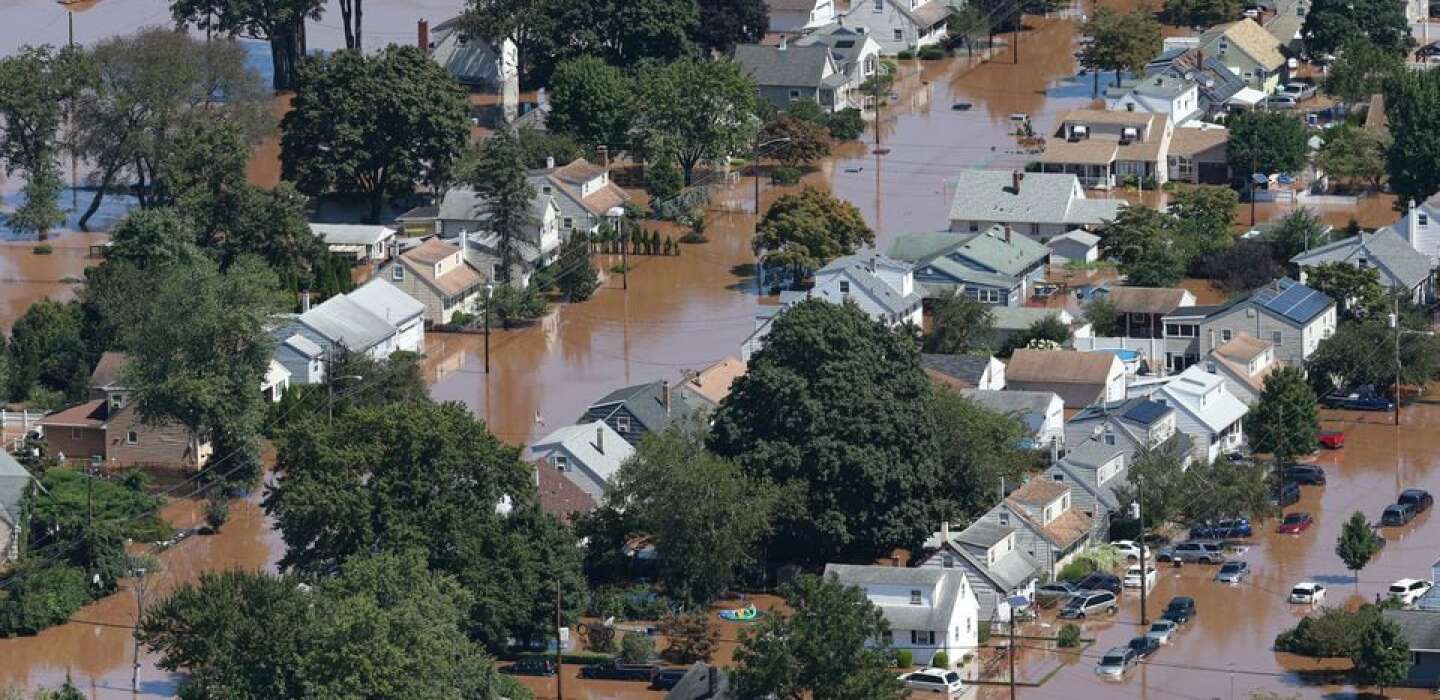
Will N.J., Homeowners Be Paid to Leave as Flood Risks Rise?
(TNS) – Outside Phil Rosso’s porch sits the empty lot where his daughter’s house stood before the remnants of Hurricane Ida blew through Lambertville in 2021 and sent the house careening into the nearby creek.
That home and another next to it were ultimately bought by New Jersey’s Blue Acres program and the remaining structures were torn down.
Only a barren patch of land remains, a stark reminder for Rosso of what storms and flooding could bring to his own property right next door.
“Honestly, I don’t feel safe here,” the 60-year-old building inspector admits.
Rosso’s home did not qualify for a buyout because, state officials told him, the level of damage was not significant enough.
“We still return there all the time … that can be a blessing and a curse,” Stephanie Cepparulo , Rosso’s daughter whose home was purchased, chimes in. “You’re still sort of stuck looking at the trauma of it but I’m grateful that my parents’ home still stands.”
It’s a story that will only continue to play out across New Jersey for the years and decades to come, forcing residents statewide to confront the realities more floodwaters will inevitably bring — as many did in early January.
Over the past 30 years, New Jersey has used more than $211 million, of mostly federal funding, to buy more than 1,100 flood-prone homes from their owners, according to data obtained by NJ Advance Media from the New Jersey Department of Environmental Protection via an Open Public Records Act request.
The goal, state officials said, is to help homeowners who face repeated flooding risks by encouraging them to relocate.
But its intent is also to acquire entire flood-prone neighborhoods so the land can remain as open space, absorb stormwater runoff and act as a buffer to lessen impacts in other areas — and to try do so proactively. Since the program’s inception, though, that’s rarely been the case.
An NJ Advance Media analysis of state data found that more than half the funds have been spent buying hundreds of properties in just four towns — Woodbridge , Sayreville , Manville and South River — and most of it in the wake of major storms like Hurricane Sandy. Of the 35 towns that have seen funding for buyouts, more than half had fewer than 10 homeowners — in some cases just one — taking the offer.
As climate change increases the frequency and severity of storms across New Jersey , more people’s properties will be in jeopardy. Some estimates from New Jersey planners have placed as much as 18% of the state in “flood hazard areas” where families are especially at risk of being overwhelmed by stormwater from inclement weather.
State officials and experts say paying people to leave their homes through the voluntary Blue Acres program will be an increasingly important tool — and could even become mandatory. But homeowners and critics say the state-administered program — which relies on up to 75% in federal funding — can be time-consuming, forestalled by bureaucracy, and will need to drastically improve.
What’s needed for a better outcome?
Throughout interviews with NJ Advance Media , officials acknowledged more resources at the state level, more state-dedicated money to hand out, fewer hurdles to access those funds, better communication for people affected, an improved application process — and a less reactive and more proactive system.
The reason for that was readily apparent in Little Falls this month.
The Passaic River , which snakes by the 3-square-mile town, rose and flooded parts of the Singac neighborhood. Water seeped into the backyards of homes along Riverview Circle , caking the area in mud and muck, and sending debris down streetscapes.
Gov. Phil Murphy would later visit a flooded section where a former homeowner — who now lives in Florida but still rents a place in the neighborhood to visit — would remark that “they should have never built here.”
Despite constant and devastating flooding, Little Falls has relocated just 8 homeowners via buyouts since 1995, the year the state’s Blue Acres program launched.
It’s just another example of what critics argue has been a somewhat haphazard system.
“People have different risk tolerances. Some people want to stay in their home no matter what. Other people have lower risk tolerances, and they’re more willing to consider relocating,” said Laura Geronimo , a PhD candidate with Rutgers University’s Bloustein School of Planning and Public Policy . “So ultimately, this whole process is really a social process.”


Average Rating